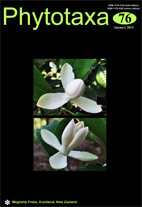Abstract
Determining the actual phylogenetic diversity of unicellular coccoid algae, and developing a biologically appropriate classification system for them, pose challenges. We studied the phylogenetic and morphological diversity of a series of algal strains identified as <i>Nephrodiella</i> spp., <i>Ellipsoidion parvum</i>, and <i>Neocystis<i> spp. By determining sequences of the 18S-ITS1-5.8S-ITS2 rDNA region we showed that the strains studied represent just two genotypes; differences in the ITS2 region of the two genotypes, including one compensatory base change (CBC) in the helix II, suggested that they may be considered as two separate species. We then employed geometric morphometrics to evaluate the extent of morphological differences among the strains. This analysis revealed that the degree of morphological variability is higher among strains of the same genotype than between the genotypes. Our results thus suggest that all the strains represent only two closely related cryptic species of trebouxiophycean algae, which may be identified as <i> Neocystis brevis </i> and <i>Neocystis mucosa</i>. Two previously described species, <i>Ellipsoidion parvum</i>, originally described as a heterokont alga, and <i>Neocystis vischeri</i>, are revealed as junior synonyms of <i>N. brevis</i>. We discuss our findings as a case of taxonomic inflation that may be a general, yet somewhat neglected, aspect of the current taxonomy of unicellular algae.

